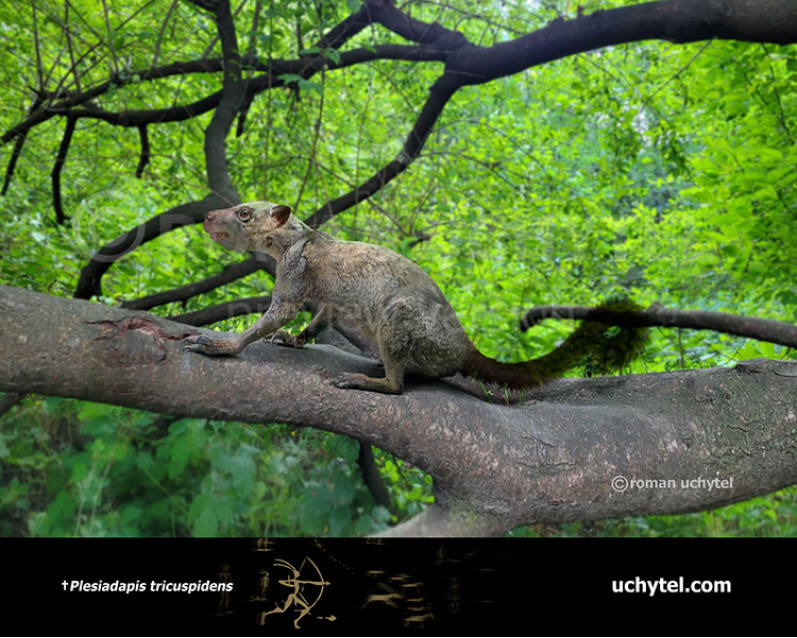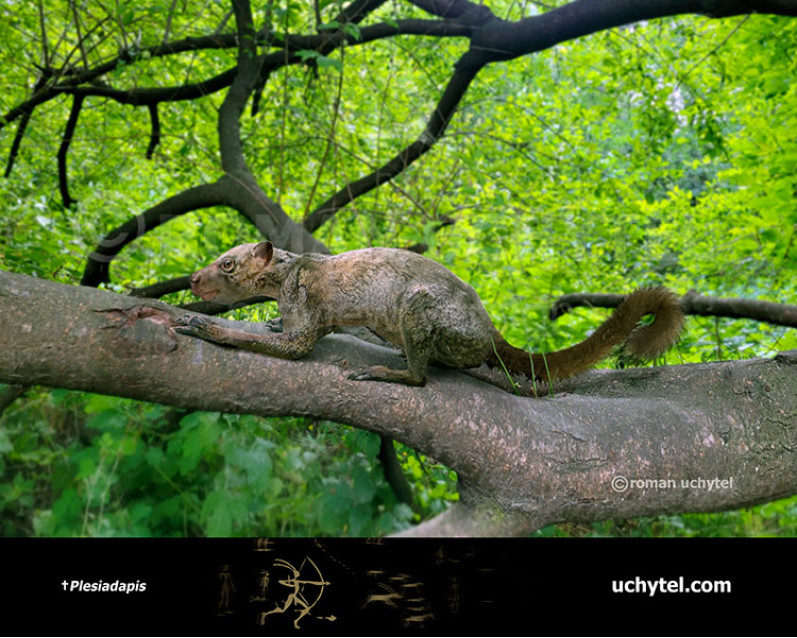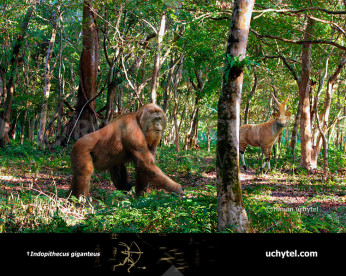Plesiadapis
2027720277Plesiadapis (†Plesiadapis (Gervais, 1877))
Order: Plesiadapiformes
Family: †Plesiadapidae
Dimensions: weight - 2 - 2,5 kg
Temporal range: Late Paleocene-Early Eocene (North America and Europe)
A typical representative: †Plesiadapis tricuspidens
Plesiadapis probably arose in North America and colonized Europe on a landbridge via Greenland. This is one of the oldest known primate-like mammal genera which existed about 58–55 million years ago.
Thanks to the abundance of the genus and to its rapid evolution, species of Plesiadapis play an important role in the zonation of Late Paleocene continental sediments and in the correlation of faunas on both sides of the Atlantic. Two remarkable skeletons of Plesiadapis, one of them nearly complete, have been found in lake deposits at Menat, France where Plesiadapis is one of the most common mammals. The skull is overall reminiscent of a lemur, though it lacks the postorbital bars. The skeletal adaptations are consistent with a largely arboreal lifestyle in the trees.
Although the placement of the Plesiadapis lineage is still up for debate, the consensus in the 1970s was that they were closest to early tarsier-like primates.Plesiadapiformes have also been proposed as a nonprimate sister group to Eocene-Recent primates.
In 2013, a phylogenetic analysis that includes also the basal primate Archicebus positions Plesiadapis firmly outside of the Primates, as a sister group to both Primates and Dermoptera (Colugos)
Plesiadapis had mobile limbs that terminated in strongly curved claws, and it sported a long bushy tail which is preserved in the Menat skeletons. The robust limbs, the long, laterally compressed claws, and the long, bushy tail indicate that it was an arboreal quadruped.
Plesiadapis (†Plesiadapis (Gervais, 1877))
Order: Plesiadapiformes
Family: †Plesiadapidae
Dimensions: weight - 2 - 2,5 kg
Temporal range: Late Paleocene-Early Eocene (North America and Europe)
A typical representative: †Plesiadapis tricuspidens
Plesiadapis probably arose in North America and colonized Europe on a landbridge via Greenland. This is one of the oldest known primate-like mammal genera which existed about 58–55 million years ago.
Thanks to the abundance of the genus and to its rapid evolution, species of Plesiadapis play an important role in the zonation of Late Paleocene continental sediments and in the correlation of faunas on both sides of the Atlantic. Two remarkable skeletons of Plesiadapis, one of them nearly complete, have been found in lake deposits at Menat, France where Plesiadapis is one of the most common mammals. The skull is overall reminiscent of a lemur, though it lacks the postorbital bars. The skeletal adaptations are consistent with a largely arboreal lifestyle in the trees.
Although the placement of the Plesiadapis lineage is still up for debate, the consensus in the 1970s was that they were closest to early tarsier-like primates.Plesiadapiformes have also been proposed as a nonprimate sister group to Eocene-Recent primates.
In 2013, a phylogenetic analysis that includes also the basal primate Archicebus positions Plesiadapis firmly outside of the Primates, as a sister group to both Primates and Dermoptera (Colugos)
Plesiadapis had mobile limbs that terminated in strongly curved claws, and it sported a long bushy tail which is preserved in the Menat skeletons. The robust limbs, the long, laterally compressed claws, and the long, bushy tail indicate that it was an arboreal quadruped.


-797x638.jpg)
-797x638.jpg)


-70x56.jpg)
-70x56.jpg)




